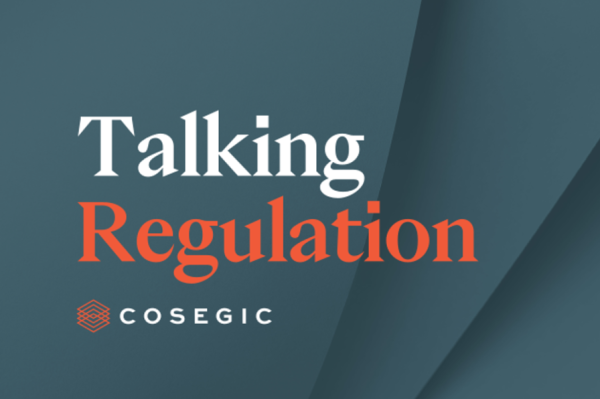The long awaited (and feared by some!) response from the government on its strategy for cryptoassets in the UK has been finally revealed. On 4th April, the government announced its plans to make the UK a global hub for cryptoassets technology and investment which will include a package of the following measures:
-
Stablecoins to be brought within regulation paving their way for use in the UK as a recognised form of payment
-
Introducing a ‘financial market infrastructure sandbox’ to enable firms to experiment and innovate
-
Establishing a Cryptoasset Engagement Group to work more closely with the industry
-
Exploring ways of enhancing the competitiveness of the UK tax system to encourage further development of the cryptoassets market
-
Working with the Royal Mint on a Non-Fungible Token (NFT) this summer as an emblem of the forward-looking approach the UK is determined to take
As part of the government’s plans, stablecoins will be recognised as a valid form of payment that, with appropriate regulation, could provide a more efficient means of payment and widen consumer choice. As such, the government intends to legislate to bring stablecoins, where used as a means of payment, within the payments regulatory perimeter. For this, HM Treasury (‘HMT’) has published its response to its consultation in 2021 and call for evidence on the UK regulatory approach to cryptoassets, stablecoins, and distributed ledger technology (‘DLT’) in financial markets, and which defines the strategy to regulate stablecoins issuers and service providers to operate and invest in the UK. We have summarised the government response and outlined the next steps for crypto-regulation in the UK below.
Cryptoassets and Stablecoins Regulation
Phase One
HMT maintains its position that in a fast-growing and nascent area of financial services the regulatory framework for cryptoassets and classifications ought to be designed with flexibility, since static classification or definitions could quickly become outdated. In designing that flexibility, however, the government recognises that clarity must be achieved to ensure that market participants are able to identify where their activities fall and their subsequent obligations arise.
The use of stablecoins in retail payments is emerging and the government considers that with appropriate protection stablecoins could play an important role in facilitating improvements and competition. The government proposes that the regulation should capture all stablecoins that reference fiat currencies, including a single or multiple basket currencies stablecoin. This takes on board arguments made about the diversity of models and uses of stablecoins, and the government’s priority to regulate those that have the capacity to potentially develop into a widespread means of payment.
The first phase of legislative changes will extend the existing payments regulatory regime to cover issuers of stablecoins and entities providing related services. As such, HMT will amend existing legislation governing electronic money and payments (and other relevant legislation) at the earliest available opportunity.
The principal legal instruments that will require amendment are the Electronic Money Regulations 2011 (EMRs), the Payment Services Regulations 2017 (PSRs) and Parts 5 of the Banking Act 2009, and the Financial Services (Banking Reform) Act 2013. This means that a regulatory mandate in relation to stablecoin regulation will be developed for each of the Financial Conduct Authority (FCA), Bank of England (BoE), and Payment Systems Regulator (PSR), as is the case today for traditional payment services and e-money where there is a need to consider co-responsibility for regulation between the three authorities.
Phase Two
The government considers that additional regulation of a broader set of cryptoasset activities, particularly as a means of investment, should form a second legislative phase. This is needed to respond to the increasing uptake of wider cryptoassets; the risks to consumers and markets by them remaining outside the regulatory perimeter for an extended period; and finally to create a regulatory environment in which these services can responsibly innovate. A further consultation from HMT on this respect will follow later this year.
Although a framework already exists under the EMRs and PSRs to regulate both payments and e-money institutions, the government is aware that it may not be applicable on a like-for-like basis for stablecoins, so an adjusted framework is proposed as a vehicle to regulate stablecoin issuance and wallet providers that takes relevant aspects of the current approach to e-money and payment services regulations as far as possible. Subsequent FCA guidance and rules will set out in detail the requirements that apply to specific activities. The suggested approach will require appropriate amendments to certain aspects of the regulations.
In practice, stablecoins issuers do not always offer a claim against the issuer (as the right to redeem the value of the token may sit with a third party), therefore some stablecoins didn’t fit within the established definition of e-money. To address this, the government considers that customers should generally be able to make a claim to either the stablecoin issuer or, where appropriate, the consumer facing entity. The legal requirement would continue to sit with the issuer, however, requiring the issuer to directly fulfil the legal claim might be unnecessary and only required in systemic cases. In cases of systemic risk and where judged necessary, the BoE may seek to require a direct legal claim on the issuer to address financial stability risks. The statutory redemption rights set out in the EMRs would also apply.
Safeguarding requirements, which exist today under the EMRs, will also apply to customer funds received in exchange for issuing a stablecoin. More widely, the key features of the EMRs would entirely apply to stablecoin issuance (including the same set of exemptions which exist within the EMRs), ensuring consistency with traditional e-money regulation.
With respect to location-based obligations specifically, certain location requirements already exist under the PSRs and EMRs. Consequently, where stablecoins are brought into the existing regulatory perimeter, the requirements of the regulations will apply, including provisions requiring entities to be based in the UK and authorised by the FCA.
New custodial activity
Given the important role of the wallet providers in holding the custody of stablecoins for customers and providing access to them at all times, the government considers that regulation is absolutely necessary to ensure that custody, or arranging the custody of the token, is subject to appropriate regulation and conduct requirements.
The government intends to cover the act of someone other than the issuer holding the stablecoin used as a means of payment (or means of access to the stablecoin) on behalf of a third party. It would be intended to capture wallet providers or any firms (e.g. exchanges) offering similar services, therefore bringing within the UK regulatory perimeter, firms that provide services to custody or arrange the custody of stablecoins used as a means of payment on behalf of customers.
Bringing custody into the regulatory perimeter in the UK’s jurisdiction will require authorisation by the FCA. The government and regulators will work on the details of this new regime during the coming months. However, it is already clear that some regulatory rules will be applicable to stablecoin custodians, for example:
-
Prudential and organisational requirements;
-
Reporting requirements;
-
Conduct of business requirements;
-
Operational resilience;
-
Custody/safeguarding requirements;
-
Consumer protections.
Where a firm is providing custody (or arranging custody) and also meets the requirements of the Banking Act, the firm will be dual regulated by the FCA and BoE.
BoE and PSR Regulation for Stablecoin Payment Systems
Following the responses to the consultation, the government considers it essential to extend the scope of the Banking Act 2009 to capture relevant stablecoin-based payment systems. In this sense, the definition of a payment system will be amended to include arrangements that facilitate or control the transfer of ‘digital settlement assets’ which would be designed to capture stablecoin-based arrangements. Such a digital settlement asset would be drawn broadly by the government in order to ensure required regulatory flexibility. In line with the BoE’s existing powers, where appropriate this would enable supervision of a recognised entity at launch.
The scope of the Financial Services (Banking Reform) Act 2013 will be also broadened, to capture relevant stablecoin-based systems within the remit of the PSR. Clarification will be provided so that the legislation operates appropriately for ‘digital settlement assets’. The application of the Banking Act will be also extended to include a specific set of service providers to which regulation could apply such as wallets, exchanges or custodians of stablecoin reserves.
Finally, although not included in the initial consultation, the government considers that arrangements will be needed to manage risks related to systemic stablecoin failure and define appropriate backstop arrangements for these firms to meet the Financial Policy Committee’s expectations and ensure sufficient public confidence. In this respect, HMT intends to make appropriate amendments to the Financial Market Infrastructure SAR, and clarify that it, rather than the Payments and E-Money SAR, should apply to systemic stablecoin arrangements with alterations.
Government response on the call for evidence on investment and whole uses of DLT
In terms of using tokens to facilitate securities transactions, HMT notes that existing legislation and definition provide a good starting point for enabling the tokenisation of securities given the early stage in adoption of DLT in the investment sector. However, HMT will work closely with the BoE, the FCA and the crypto industry to consider what possible changes and means may be required. As DLT is used more widely, further issues may arise with the existing regulatory framework, so the government will ensure it adopts a flexible approach to ensure that regulation is able to evolve over time in response to new developments.
Regarding the use of DLT in Financial Market Infrastructures (FMIs), HMT recognises that using DLT to provide the FMI services that underpin financial markets could unlock substantial benefits (e.g. enabling processes to become more efficient, transparent, less costly, and more resilient), but that there are also potential risks that need to be managed, particularly in the disruption to existing market practices and the potential fragmentation in the provision of FMI services.
Existing financial services regulation and legislation were drafted without considering DLT which means that the current provisions may pose an obstacle that can hinder the full adoption of DLT for tokenisation of financial securities and FMIs. Although, it is evident that changes to the current legislation are likely to be required to facilitate this, it is not yet clear how and where these changes should be made. For this purpose, HMT will partner with the FCA and the BoE to develop a Financial Market Infrastructure (FMI) Sandbox that it is planned to be up and running by 2023 so regulators can analyse and better understand the particular challenges and requirements in this area and use the lessons learned from the FCA Sandbox to support any future rule or legislative changes on this matter.
So, while the final destination has not quite been finalised yet, we now have a clear direction of travel for the next phase of crypto-regulation in the UK. In the meantime, we continue to provide advice and support to firms wishing to operate within the current regulatory regime, requiring registration by the FCA under the Money Laundering Regulations.
Related resources
All resources
Talking Regulation: Regulators revise Memorandum of Understanding in relation to payments in the UK

CP25/15: A regime for cryptoasset firms: current developments

FCA authorisation for Digital Finance Firms: Do’s and don'ts

Talking Regulation: PISCES and the rise of secondaries: unlocking liquidity in private markets

